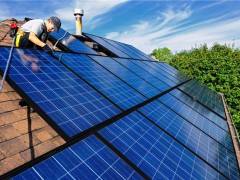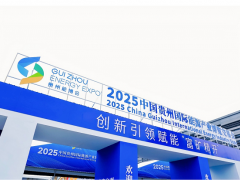據(jù)油價(jià)網(wǎng)2021年7月22日?qǐng)?bào)道,美國(guó)石油和天然氣行業(yè)正在從去年的市場(chǎng)低迷中逐步復(fù)蘇。 但與以往的盛衰周期不同的是,美國(guó)油氣行業(yè)一直在推遲提高產(chǎn)量,而專注于加強(qiáng)資產(chǎn)負(fù)債表、償還貸款和回報(bào)股東。 由于今年大宗商品價(jià)格上漲,以及最重要的資本支出紀(jì)律,美國(guó)頁巖探區(qū)現(xiàn)在的財(cái)務(wù)狀況變得更強(qiáng)。 近幾個(gè)月來,破產(chǎn)數(shù)量減少,而且破產(chǎn)間隔也大大縮短,能源貸款違約率已降至去年3月和4月石油市場(chǎng)崩潰以來的最低水平。
此外,低利率促使許多美國(guó)石油和天然氣公司籌集新債務(wù),其中大部分用于償還現(xiàn)有債務(wù),而不是鉆探更多井。
美國(guó)能源行業(yè)違約大幅下降
一項(xiàng)指標(biāo)顯示,近幾個(gè)月來,美國(guó)石油和天然氣行業(yè)的貸款和債券的信貸質(zhì)量有了顯著改善。
惠譽(yù)國(guó)際評(píng)級(jí)7月21日在一份報(bào)告中稱,7月份美國(guó)能源行業(yè)過去12個(gè)月的違約率為9.1%。 能源行業(yè)違約率自去年4月以來首次降至兩位數(shù)以下。 惠譽(yù)國(guó)際評(píng)級(jí)指出,7月份能源行業(yè)違約率也從3月份20.3%的峰值大幅下降。
惠譽(yù)國(guó)際評(píng)級(jí)表示,較低違約和較高油價(jià)將進(jìn)一步推動(dòng)能源行業(yè)違約率在今年年底前降至5%。 惠譽(yù)國(guó)際評(píng)級(jí)的數(shù)據(jù)顯示,與去年規(guī)模超過15億美元的發(fā)行機(jī)構(gòu)多達(dá)4起違約相比,今年的違約規(guī)模將會(huì)較小。
相比之下,去年這個(gè)時(shí)候,惠譽(yù)國(guó)際評(píng)級(jí)估計(jì),截至去年的能源行業(yè)違約率為18%。 僅在去年第二季度,能源行業(yè)就產(chǎn)生了50億美元的違約。
惠譽(yù)國(guó)際評(píng)級(jí)預(yù)計(jì),“未來幾個(gè)月不會(huì)有很多破產(chǎn)”。 惠譽(yù)國(guó)際評(píng)級(jí)杠桿融資高級(jí)主管埃里克·羅森塔爾告訴《福布斯》資深撰稿人Mayra Rodriguez Valladares:“我們的最關(guān)注市場(chǎng)貸款中只有2%與能源有關(guān)。”
惠譽(yù)國(guó)際評(píng)級(jí)的數(shù)據(jù)顯示,今年能源行業(yè)債券違約率也大幅下降。
羅森塔爾告訴Rodriguez Valladares,“能源債券僅占我們最關(guān)注市場(chǎng)債券的10%,低于一年前的57%。到目前為止,只有32億美元的高收益能源違約,而去年同期為144億美元。
能源企業(yè)破產(chǎn)速度放緩
由于債務(wù)不可持續(xù)的公司已經(jīng)在過去一年申請(qǐng)破產(chǎn),而其他公司則在用創(chuàng)紀(jì)錄的現(xiàn)金流償還債務(wù),今年能源行業(yè)違約率將大幅下降。
今年第一季度北美生產(chǎn)商申請(qǐng)破產(chǎn)保護(hù)的數(shù)量達(dá)到了2016年第一季度以來的最高數(shù)量,然而破產(chǎn)速度顯著放緩,自去年第二和第三季度達(dá)到峰值以來,破產(chǎn)浪潮已明顯放緩。美國(guó)律師事務(wù)所haynes and Boone 在截至3月31日的最新統(tǒng)計(jì)報(bào)告中說,盡管今年第一季度破產(chǎn)的數(shù)量高于自2016年以來的第一季度,在去年第二季度和第三季度分別有18家和17家石油和天然氣生產(chǎn)商提交破產(chǎn)保護(hù)申請(qǐng)以后,申請(qǐng)數(shù)量呈放緩趨勢(shì),負(fù)債累累的生產(chǎn)商在這兩個(gè)季度里受到石油價(jià)格暴跌和負(fù)債危機(jī)最嚴(yán)重影響。
美國(guó)頁巖探區(qū)企業(yè)將再次舉債
美國(guó)石油和天然氣公司正利用高油價(jià)和歷史低位利率尋求融資。
美國(guó)能源信息署(EIA)4月份曾稱,油價(jià)上漲和低利率促使美國(guó)獨(dú)立上市石油生產(chǎn)商在3月通過債券和股票發(fā)行融資,創(chuàng)下去年8月以來的最高紀(jì)錄。
這一次,借入的資金見被用于償還先前提取的信貸安排或債券,而不是用于無休止地鉆探新井和追逐創(chuàng)紀(jì)錄的產(chǎn)量增長(zhǎng)。
EIA表示:“自原油價(jià)格開始上漲以來,美國(guó)原油生產(chǎn)商一直在通過舉債和股權(quán)融資來為債務(wù)再融資、恢復(fù)鉆井活動(dòng)或購買新探區(qū)。”
EIA指出,低企業(yè)債券利息也有助于降低新債泉利率,降低新債券發(fā)行成本。
歷史上低利率給了美國(guó)頁巖鉆井公司額外的激勵(lì),促使他們?cè)黾有碌膫鶆?wù)并為現(xiàn)有債務(wù)再融資。 據(jù)彭博情報(bào)稱,目前美國(guó)能源部門發(fā)行新債券的成本與7年前一樣低,而當(dāng)時(shí)油價(jià)為每桶100美元。
資本紀(jì)律將維持多久?
正如石油巨富哈羅德?哈姆在2017年警告的那樣,今年到目前為止,美國(guó)油氣公司一直堅(jiān)持資本紀(jì)律的承諾,他們更愿意向投資者展示資金,讓自己“被遺忘”。
油價(jià)上漲和預(yù)計(jì)將創(chuàng)紀(jì)錄的現(xiàn)金流有望在今年修復(fù)許多頁巖生產(chǎn)商的資產(chǎn)負(fù)債表。
挪威雷斯塔能源公司在7月早些時(shí)候的一份分析報(bào)告中表示,即使美國(guó)頁巖想要大幅提高產(chǎn)量以應(yīng)對(duì)每桶70美元的油價(jià),他們也需要至少9個(gè)月的時(shí)間才能看到產(chǎn)量的顯著增長(zhǎng)。
在評(píng)論6月底發(fā)布的《第二季度達(dá)拉斯聯(lián)儲(chǔ)能源調(diào)查》報(bào)告以后,一家勘探和生產(chǎn)公司的高管可能總結(jié)了今年美國(guó)頁巖探區(qū)的座右銘:
“別上當(dāng),鉆井商:堅(jiān)持資金紀(jì)律以及享受你們產(chǎn)品的更高價(jià)格。”
李峻 編譯自 油價(jià)網(wǎng)
原文如下:
U.S. Shale Sees Light At The End Of The Tunnel
The U.S. oil and gas sector is recovering from last year’s market slump. But unlike the previous boom-and-bust cycles, the industry has held off on boosting production and has focused on strengthening balance sheets, repaying loans, and rewarding shareholders. As a result of the rallying commodity prices this year, and most of all, the discipline in capital spending, the U.S. shale patch is now financially stronger. Bankruptcies have been fewer and far apart in recent months, and the energy loan default rate has dropped to the lowest level since the oil market crashed in March and April last year.
In addition, low interest rates have prompted many U.S. oil and gas firms to raise new debt, most of which goes to repaying existing liabilities, not to drilling more wells.
U.S. Energy Defaults Drop Significantly
One indicator shows that the credit quality of the loans and bonds in the U.S. oil and gas sector has significantly improved in recent months.
The energy sector’s trailing twelve-month (TTM) default rate stood at 9.1 percent in July, Fitch Ratings said in a report on Wednesday. The energy default rate has fallen below the double-digit percentage for the first time since April 2020. The default rate is also considerably down from the 20.3-percent peak in March, Fitch Ratings noted.
Smaller defaults and higher oil prices are set to further push the energy default rate down to 5 percent by the end of this year, the rating agency says. This year will see smaller defaults compared with as many as four defaults of $1.5 billion-plus size issuers in 2020, according to Fitch Ratings.
To compare, at this time last year, Fitch Ratings was estimating the energy default rate to finish the year 2020 at 18 percent. In the second quarter of 2020 alone, energy generated $5 billion of defaults.
This year, Fitch Ratings does not expect “many bankruptcies coming in the next few months. only 2% of our Top Market Concern Loans relates to energy,” Eric Rosenthal, Senior Director of Leveraged Finance at Fitch Ratings, told Forbes’ Senior Contributor Mayra Rodriguez Valladares.
Defaults on bonds have also significantly dropped this year, according to Fitch Ratings.
“Energy makes up only 10% of our Top Market Concern Bonds list, down from 57% as of one year ago. There has been only $3.2 billion of YTD high yield energy defaults compared with $14.4 billion for the same period in 2020,” Rosenthal told Rodriguez Valladares.
Energy Bankruptcies Slow Down
This year, the default rate is considerably down, as companies with unsustainable liabilities have already filed for bankruptcy over the past year, while the others are using record cash flows to pay down debts.
The number of North American producers that filed for bankruptcy protection in the first quarter of 2021 reached the highest number for a first-quarter since 2016, yet the wave of bankruptcies has significantly slowed since the peaks in the second and third quarter of 2020, law firm Haynes and Boone said in its latest tally to March 31. Even though the number of first-quarter 2021 bankruptcies was the highest for a Q1 since 2016, it showed the trend of slowing filings after 18 oil and gas producers filed in the second quarter of 2020 and another 17 in the third quarter, the two quarters in which the oil price crash and the crisis were most severely felt by indebted producers.
The U.S. Shale Patch Is Borrowing Again
U.S. oil and gas firms are taking advantage of the high oil prices and historically low-interest rates to seek financing.
Higher oil prices and low-interest rates have prompted listed independent U.S. oil producers to raise in March the most financing via debt and equity issues since August last year, the EIA said in April.
This time around, the borrowed money is being used for repayment of previously drawn credit facilities or bonds, not for relentless drilling of new wells and chasing record production growth.
“Since crude oil prices began increasing, U.S. crude oil producers have been raising debt and equity to refinance debts, resume drilling activities, or purchase acreage,” the EIA said.
Low corporate bond yields have also contributed to lower interest rates on new bonds and reduce the cost of issuing debt, the EIA noted.
Historically low interest rates give additional incentives to U.S. shale drillers to raise new debt and refinance existing liabilities. Currently, it’s as cheap for the U.S. energy sector to raise new debt as it was seven years ago, when oil was $100 per barrel, according to Bloomberg Intelligence.
How Long Will Discipline Hold?
So far this year, U.S. oil and gas firms have been sticking with promises of capital discipline and prefer to show investors the money to drilling themselves “into oblivion,” as Harold Hamm warned back in 2017.
Higher oil prices and expected record cash flows could heal the balance sheets of many shale producers this year.
Even if U.S. shale wanted to significantly raise production in response to $70 oil, it would take at least nine months to see a meaningful jump in output, Rystad Energy said in ananalysis earlier this month.
One executive at an E&P firm may have summed up this year’s motto of the U.S. shale patch in the following comment in the Dallas Fed Energy Survey Q2 published at the end of June:
“Don’t take the bait, drillers: Stay capital disciplined and enjoy the higher prices for your product.”
免責(zé)聲明:本網(wǎng)轉(zhuǎn)載自其它媒體的文章,目的在于弘揚(yáng)石化精神,傳遞更多石化信息,并不代表本網(wǎng)贊同其觀點(diǎn)和對(duì)其真實(shí)性負(fù)責(zé),在此我們謹(jǐn)向原作者和原媒體致以敬意。如果您認(rèn)為本站文章侵犯了您的版權(quán),請(qǐng)與我們聯(lián)系,我們將第一時(shí)間刪除。







